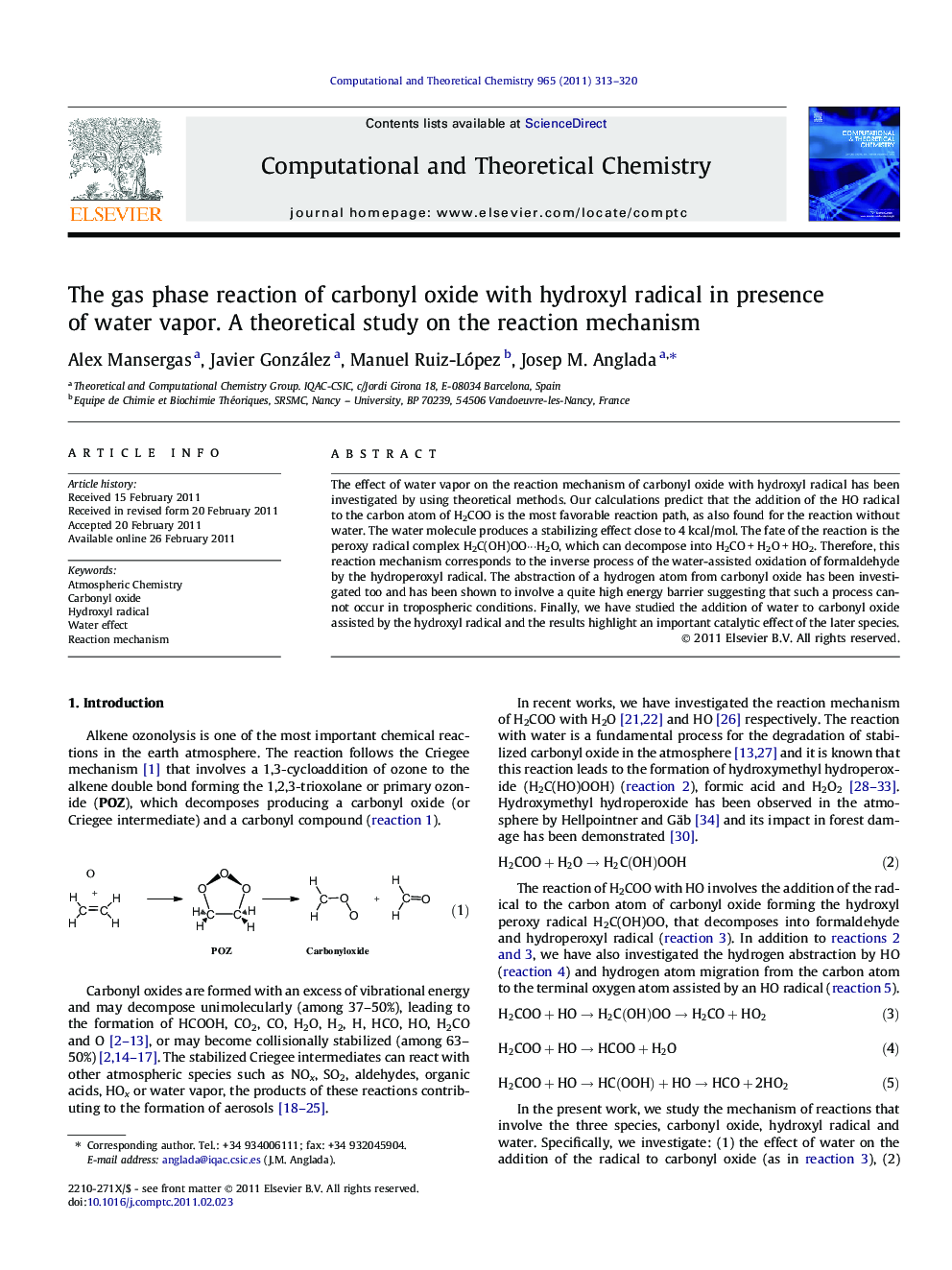| Article ID | Journal | Published Year | Pages | File Type |
|---|---|---|---|---|
| 5395359 | Computational and Theoretical Chemistry | 2011 | 8 Pages |
Abstract
The effect of water vapor on the reaction mechanism of carbonyl oxide with hydroxyl radical has been investigated by using theoretical methods. Our calculations predict that the addition of the HO radical to the carbon atom of H2COO is the most favorable reaction path, as also found for the reaction without water. The water molecule produces a stabilizing effect close to 4 kcal/mol. The fate of the reaction is the peroxy radical complex H2C(OH)OO···H2O, which can decompose into H2CO + H2O + HO2. Therefore, this reaction mechanism corresponds to the inverse process of the water-assisted oxidation of formaldehyde by the hydroperoxyl radical. The abstraction of a hydrogen atom from carbonyl oxide has been investigated too and has been shown to involve a quite high energy barrier suggesting that such a process cannot occur in tropospheric conditions. Finally, we have studied the addition of water to carbonyl oxide assisted by the hydroxyl radical and the results highlight an important catalytic effect of the later species.
Related Topics
Physical Sciences and Engineering
Chemistry
Physical and Theoretical Chemistry
Authors
Alex Mansergas, Javier González, Manuel Ruiz-López, Josep M. Anglada,
